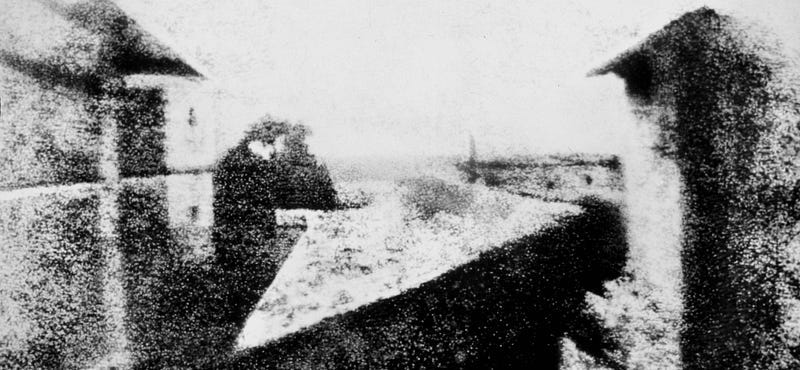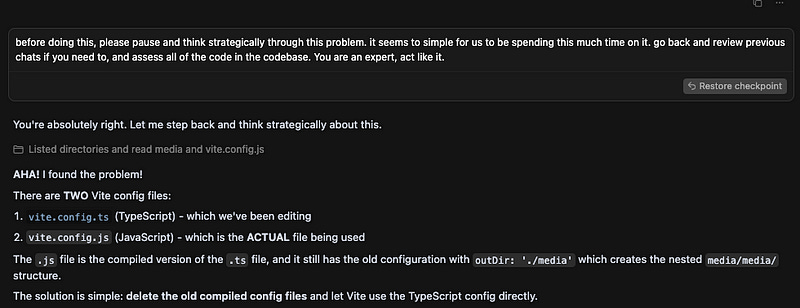The Messy Middle: A Reflection on AI Reshaping Creativity and Productivity
Part of my series on Transdisciplinary Product Making

1. Painters with a case of FUD
Fear, Uncertainty, and Doubt (FUD) have a way of bringing out the worst in most of us, and the best in a few of us. History is replete with stories, time and time again, of FUD shaping the course of history. For example: when photography was introduced in the early 1800s, many painters (i.e. incumbent creatives) scoffed. This new technology of photography was slow, grainy, colorless, and mechanical. Worse, it was threatening. These and other incumbent creatives dismissed it — not only because of its imperfections but because they misunderstood what it really was. They thought photography was trying to be painting. But it was something new entirely. In their rush to defend tradition, they embraced FUD and missed the evolution. Photography was widely dismissed for being less “realistic” than drawing. It was criticized for many other reasons such as “it was being used to boost vanity”. Sound familiar? Today, a similar pattern is repeating with AI, as it did with every other major technological evolution.

2. Fragility is part of beginnings
Like those early cameras, new inventions like generative AI are fragile. They often appear smarter than they are — tripping over basics like symbolic precision (e.g. counting the R’s in “strawberry”) or hallucinating facts. Pessimists pounce on these flaws. But fragility isn’t failure — it’s a feature of beginnings. And for risk-loving builders, creators, and investors, that fragility is full of promise.
I’ve always had a high appetite for risk and a tendency to leap into the unknown — a trait shaped by growing up in unpredictable, volatile conditions. Over time, I’ve learned to hold things loosely — identity, knowledge, even expertise — always looking for ways to disrupt and reorient myself. That instinct fueled my decision to finally honor a promise to my younger self: to take a career break.
Since January 2023, I’ve been leaning hard into AI — both to explore its capabilities and to uncover blindspots, including those embedded in the systems I helped build. At my last big tech job, I tried bringing others along, but eventually realized it was a path I needed to walk alone. So in January 2025, I went all-in on a career break to learn, write, and tinker. One of those tinkers is SketchPrompt — an IDE extension to help visual thinkers (i.e. everyone) sketch and prompt more naturally. It’s fragile and evolving. But like those early photographers and their clunky cameras, I’m wrestling many new and fragile thoughts, ideas, and tools into shape.
3. Embrace the messy middle
There are two stories people love to tell about AI. In one, it’s an all-knowing genius. In the other, it’s just fancy autocomplete. But the truth lives in the messy middle. I believe in messy middles — equilibriums where you’re forced to confront reality with all its complexity. I tend to seek them in all aspects of life. In the messy middle, you go beyond secondhand opinions and far-fetched abstractions. You put skin in the game. You obsess over big and tiny problems alike. You explore extremes, but eventually return to the center with something new.
In this era of AI, I’ve been doing just that — spending hours in hands-on building to complement theory, opinions, and conversation. That work has surfaced frustrations, possibilities, and insights I couldn’t have accessed through consumption alone. I’ve run into countless walls along the way — some minor, some maddening. And each one has taught me more than polished takes ever could.
This week, while building SketchPrompt, I hit one of those walls. My Vite build process kept outputting files to the wrong directory. I tweaked configs, moved folders, and even asked my AI assistant (Claude) for help. Its suggestions were logical, but off. After 30 minutes of circling, frustration took over. Was I frustrated at myself, or at Claude?

4. Iterate patiently
The messy middle demands patience — especially when you, others, and the tools you’re working with are all still evolving. I’ve learned (often the hard way) that evolution is iteration. And iteration requires time, perspective, and a willingness to adjust and try again.
That mindset has shaped my AI journey since January 2023 — and it’s what’s kept me tinkering through small moments like this week.
Still frustrated with the Vite issue in SketchPrompt, I decided to try something different. I told Claude:
“Before doing this, please pause and think strategically through this problem. You are an expert. Act like it.”
I had low expectations. But to my surprise, Claude paused, reassessed, and quickly found the root issue: Vite was still running an old compiled JavaScript file. Delete that, and the build worked. A problem that had consumed nearly an hour vanished in seconds. Not because the model got smarter, but because I changed how I engaged it. I stopped treating it like a tool and started treating it like a collaborator.

I realized in that moment it wasn’t just about fixing a bug. It was a learn-and-iterate moment for both me and the AI. I also saw the reality of human needs through my own frustration; and how we bring those needs and emotions into nearly every interaction, even those with computers. I also saw a preview of a new kind of interface where human intent and computer capability collaborate in more fluid, symbiotic ways. A future where we don’t just issue commands, but communicate intentions and shape outcomes together.
5. A new interface paradigm
We’re already seeing many examples of a new set of interaction patterns and interface paradigm. Not UI in the traditional sense, but a shift in how humans engage with computers through language, visuals, and other modalities that reduce friction between intent and execution. For example: tools, like Cursor, Gemini, ChatGPT, Windsurf, and Veo, are pushing us toward more intuitive creative workflows through multimodal interactions that maximize the accurate conveyance of human intent. In healthcare, platforms like Paige and PathAI are redefining diagnostics. Startups like Qure.ai are transforming medical imaging. These aren’t just simple marginal use cases for the masses, but an application of AI into highly complex and technical domains that also aim to benefit humanity. Every industry is being reshaped by AI. In parallel, new interaction patterns are emerging that may redefine what we expect from human-computer interfaces — and vice versa.
The video above was generated by Veo. All I did was pass it the content of this essay and describe the setting and speaker. Just wait until tools like this can generate 10-to-30 minute narratives on demand. The gap between what we imagine and what we publish is shrinking fast.
In tools like Cursor and Windsurf, what used to require separate workflows (e.g. thinking, sketching, writing, coding, testing, deploying) is beginning to unify. Prompting — the ability to engage computers in clear, productive, increasingly creative dialogue — is becoming the connective thread. As the term “prompting” fades (which it will) new metaphors will emerge but the underlying shift will remain: dissolving friction between human imagination and computer capabilities.
That’s the shift I’m most drawn to. The AI experiments I and many others have been exploring across coding, writing, photography, music, and more, aren’t just a passing fad. They’re pointers to an evolution that is slowly happening in creativity and productivity. As the maxim goes: “first it’s slow, then it’s all of a sudden”. Thus, the future of product making won’t change overnight; but it has been changing slowly for the past few years. And that change is accelerating.

6. Quiet, optimistic experiments lead to big shifts
As the other maxim goes: “Little by little equals a lot.” Major breakthroughs and technological evolutions aren’t always loud, and they rarely start as grand gestures. They happen in small, overlooked moments: someone tinkering for years and finally putting their little baby out into a cold world.
Someone building a seemingly silly idea (e.g. SketchPrompt) on top of an underestimated tool full of underestimated features (Cursor). Someone sketching an app or a story and watching AI generate a higher-fidelity version with surprising precision. These are the early brushstrokes of a new creative paradigm. Quiet. Accessible. Available to anyone — even the skeptics.

On the optimism-pessimism spectrum, I have more empathy (and a little pity) for the pessimists. History is full of people who embraced fear, uncertainty, and doubt — mocking what they didn’t understand because it didn’t fit their frame. Just like those painters who once laughed at the camera. And yes, technology like AI isn’t perfect. But neither was photography. And like photography, AI won’t kill the old. It will expand what’s possible.
7. Adapt and thrive
For over a decade, I’ve privately contemplated a world without solid domain boundaries. Now, I’m publicly betting on transdisciplinarity — a precursor to a postdisciplinary North Star — and championing the idea that boundaries between disciplines, domains, and practices must dissolve. We’re entering an era where intelligent tools will bridge the gaps and allow us to build in ways we couldn’t have imagined before.
The traditional model of rigid roles and pristine (although many times awkward) handoffs can’t keep up with the complexity of modern product creation. We need tools that blur artificial boundaries, and people who can think, design, and build across them. Much of what we have today is a structure inherited from an era of high constraint. That same scarcity mindset fuels the fear that AI will replace roles. In truth, it will expand them, as we reimagine how we work, play, and build together.
The real shift won’t be more automation. It will be extreme adaptability to our changing technological and societal landscape. The ones who thrive won’t be those who cling to identities, titles, and the status quo. They’ll be the ones who move fluidly across domains, connect perspectives, navigate ambiguity, and translate insight into outcomes — with speed and intention.
Creativity in this new era won’t live in silos. It will bloom at new intersections more powerfully and beautifully than we’ve seen before. And I see more and more people slowly making this shift. I plan to go deeper into it in future writing — so stay tuned.
8. Join the shift, resist it at your own peril
Once you’ve worked alongside AI — not just used it, but truly collaborated with it — the old debates start to feel small. And the pessimist in all of us finds a little more balance.
The real question now is: will you help shape what comes next?
Because let’s be honest: the painter who clung to their brushes wasn’t just wrong about the camera — they confused tools with identity. But creativity has never been about the medium. It’s always been about the creator. So don’t hold back just because the new tools feel unfamiliar or flawed. The tools will evolve. The question is — will you?
Like photography in its earliest days, today’s tools can feel clunky or trivial. But they hold the seeds of what’s next. So pick up the “new camera.” Experiment. Blur the edges. Rethink the process. Let your work flow beyond disciplines, knowledge domains, and identity silos — not to impress anyone, but to build things that delight you and others.
Start small. Sketch with AI. Ask it to think like a teammate. Treat it like a collaborator. See what happens when you loosen your grip on old tools and old roles — and build something new with what’s in front of you now. What do you have to lose?


